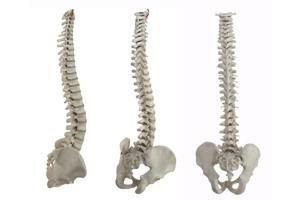
Dr. Ginsberg Explains the Gonstead Technique?
- posted: Jan. 31, 2024
With numerous chiropractic techniques available, choosing the treatment right for you can be a tough decision. If you’re not an expert, the various techniques can seem confusing, and may complicate your choice in finding the right chiropractor for you. One specific technique frequently seen is the Gonstead technique, named after its founder, Dr. Clarence S. Gonstead, who established the Gonstead Clinic of Chiropractic in Mount Horeb, Wisconsin.
But what is the Gonstead technique, and why is it different from other chiropractic methods? Dr. Gonstead discovered that foot and leg pains, which were previously difficult to treat via conventional medicine, responded to chiropractic care, and this led him to further investigate the health benefits behind chiropractic medicine.
The body’s foundation is grounded in the pelvic girdle, which consists of the pelvic bones and the lower back. If the girdle is rotated or tilted out of place, along with the vertebrae in the spine, it can result in various health issues. Pressure on disc separation in the vertebrae can cause misalignments in the spine, which can in turn compress and inflames the nerves, thus putting pressure on the nervous system. Generally, most chiropractors detect misalignments in the upper portion of the spiral column, but often relief from these adjustments is limited. The Gonstead technique focuses on the lower portion of the spine, which is frequently the origin of the problem. This treatment restores and maintains health by locating and correcting any interference with the body’s nervous system caused by swelling and misalignment of the vertebrae discs.
The Gonstead technique seeks to go beyond the usual treatment offered by most chiropractors, offering a full spinal assessment and analysis with various criteria, in order to determine the location of inflamed or misaligned spinal discs. First, visualization is carried out, in which the doctor examines the patient for any subtle changes in movement and/or posture in the back that could result in potential problems. Instrumentation also plays a key role in the Gonstead technique. A nervoscope detects uneven distributions of heat along the spinal chord, possibly attributed to inflammation or nerve pressure. A chiropractor practicing the Gonstead technique uses a process known as static palpitation --feeling the spine in a stationary position in order to locate areas of swelling, tenderness, and abnormal texture or tightness in the muscles and tissues in the back. The technique of motion palpitation involves feeling the spine while the patient is moving and bending into various positions. In this way the chiropractor can determine how each segment in the spine moves in different directions. The doctor also visualizes the structure of the spine via X-ray analysis, which is helpful to evaluate posture, joint and disc integrity.
After the analysis is complete, the necessary adjustments can then be made. The aim is to be as precise, accurate and specific as possible, with focus on the problem areas of inflammation and dislocation. It is for the above reasons that I choose to utilize the Gonstead Method with the majority of my patients children and adults.
References:
[1] http://www.gonstead.com/ Accessed September 2011
[2] http://www.chiroaccess.com/Articles/Technique-Summary-Gonstead-Technique.aspx?id=0000128 Accessed September 2011